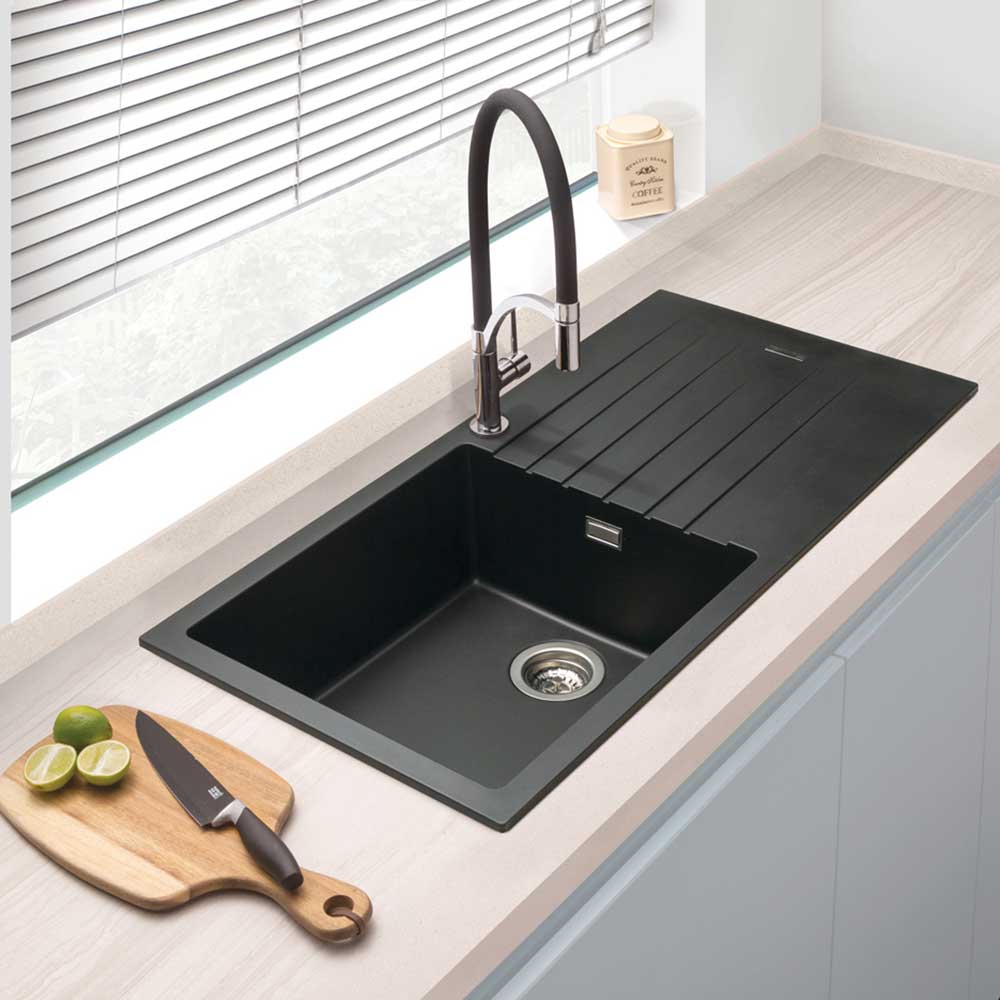Introduction to Granite Sinks
Granite sinks are a luxurious addition to any kitchen or bathroom, offering unmatched durability and aesthetic appeal. These sinks, composed of a mixture of granite stone and acrylic resin, boast a unique blend of strength and beauty, making them a favorite among homeowners who seek both functionality and style. However, like any other high-quality home feature, granite sinks require proper maintenance to preserve their natural elegance over time. Without regular care, they can lose their luster and develop stains, diminishing their overall appeal. In this comprehensive guide, we will explore effective methods for cleaning a granite sink, ensuring it remains a stunning centerpiece in your home.
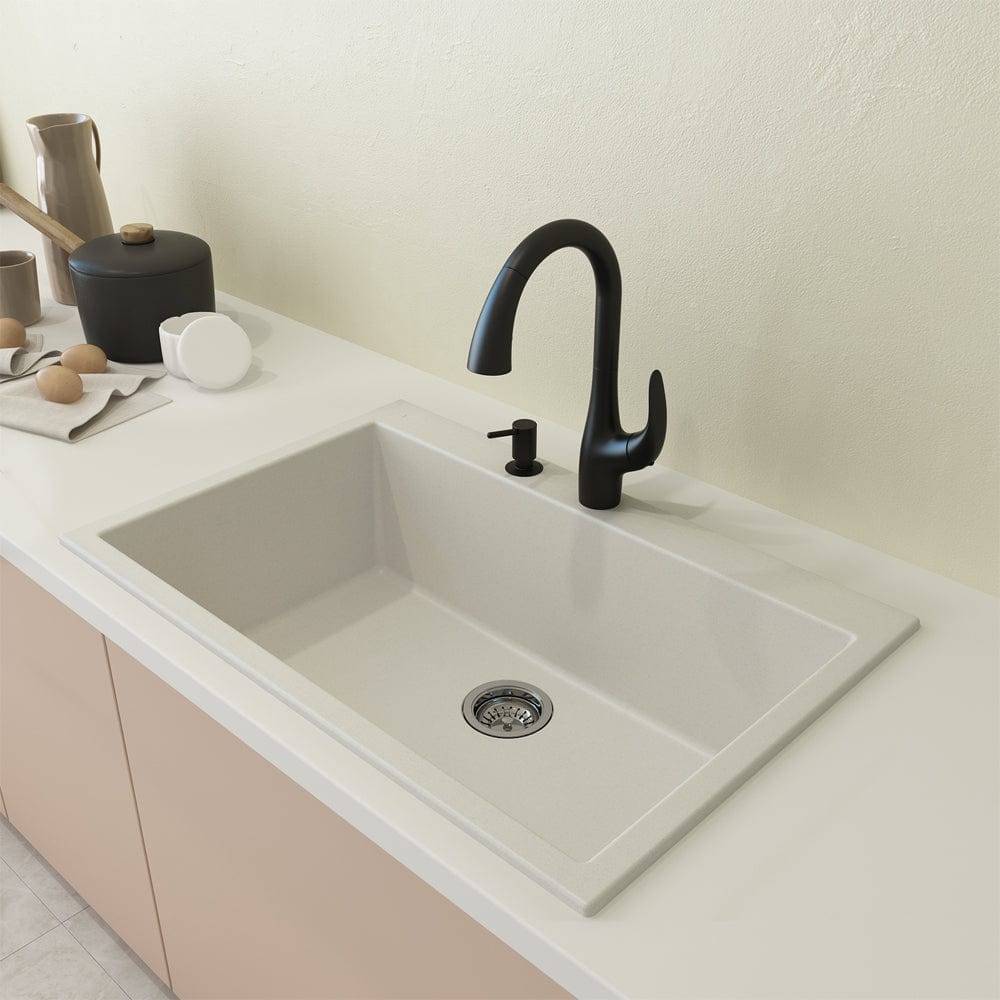
Daily Cleaning Routine
Establishing a daily cleaning routine is crucial for maintaining the pristine condition of your granite sink. After each use, rinse the sink thoroughly with warm water to remove any food particles, soap residue, or debris that may have accumulated. Use a soft sponge or cloth to wipe down the sink’s surface, paying special attention to areas around the drain and corners where grime tends to build up. Avoid using abrasive scrubbers or harsh chemicals, as these can damage the sink’s finish. Instead, opt for a gentle dish soap solution to clean the sink. Regularly performing these simple steps will prevent stains from setting in and keep your granite sink looking fresh.
Deep Cleaning Techniques
While daily cleaning is essential, granite sinks also require occasional deep cleaning to tackle stubborn stains and buildup. For a thorough clean, create a paste using baking soda and water. Apply this paste to the sink’s surface and let it sit for about ten minutes. The mildly abrasive nature of baking soda helps lift stains without scratching the granite. Gently scrub the sink with a soft-bristle brush or sponge, focusing on areas with visible stains. Rinse the sink thoroughly with warm water to remove any residue, and dry it with a soft cloth. This method effectively restores the sink’s shine and removes deeper dirt and grime.
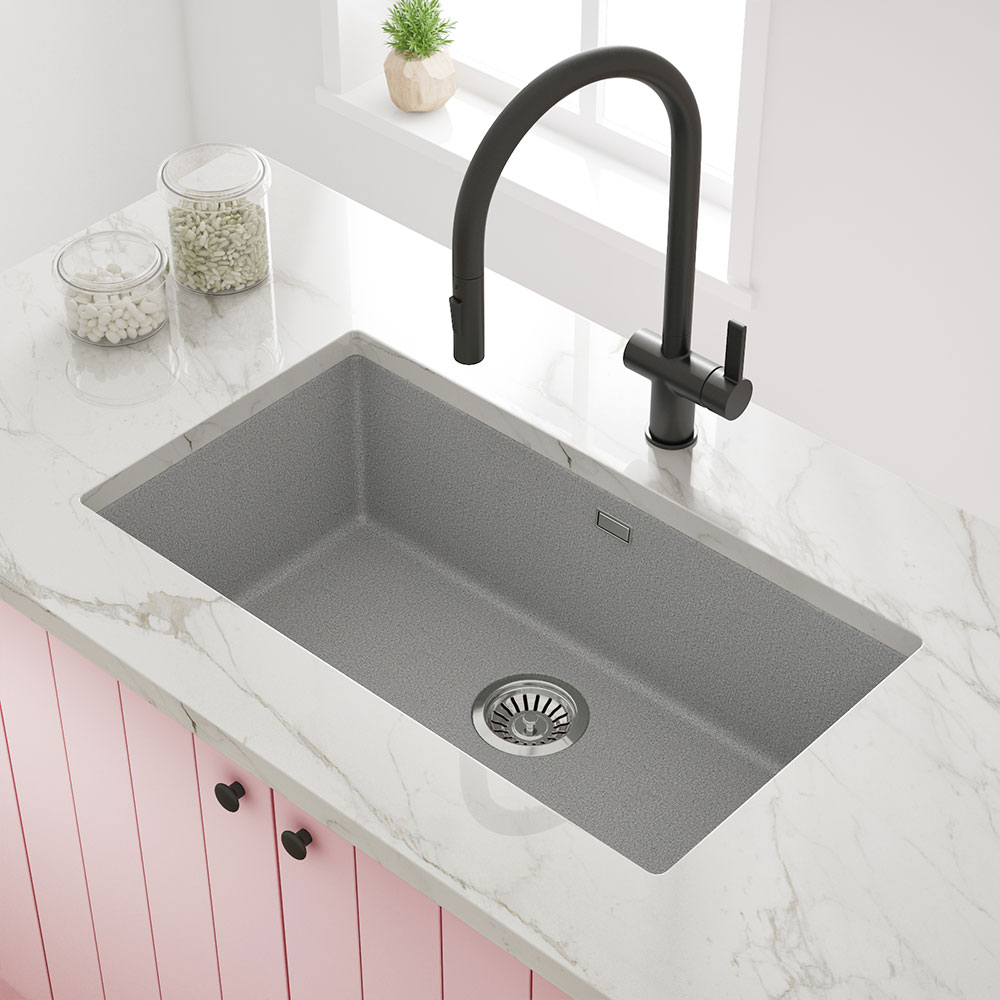
Addressing Hard Water Stains
Hard water stains can be particularly challenging to remove from granite sinks, as they often leave unsightly white spots and mineral deposits. To combat these stains, mix equal parts of white vinegar and water in a spray bottle. Spray the solution generously over the affected areas and let it sit for about 15 minutes. The acidity of the vinegar helps dissolve mineral deposits without damaging the granite. Afterward, scrub the sink gently with a soft sponge or brush, then rinse thoroughly with warm water. For stubborn stains, you may need to repeat the process. Always dry the sink completely after cleaning to prevent future water spots.
Preventing and Removing Stains
Preventing stains is easier than removing them, so taking proactive measures is key. Avoid leaving acidic substances like lemon juice, vinegar, or tomato sauce in contact with the sink’s surface for extended periods, as these can etch the granite. If spills occur, clean them up promptly. For general stain prevention, consider applying a granite sealer every six months. Sealers create a protective barrier that repels liquids, reducing the likelihood of stains. To remove existing stains, a poultice made from baking soda and water can be effective. Apply the poultice to the stain, cover it with plastic wrap, and let it sit overnight. The next day, remove the poultice and rinse the area thoroughly.
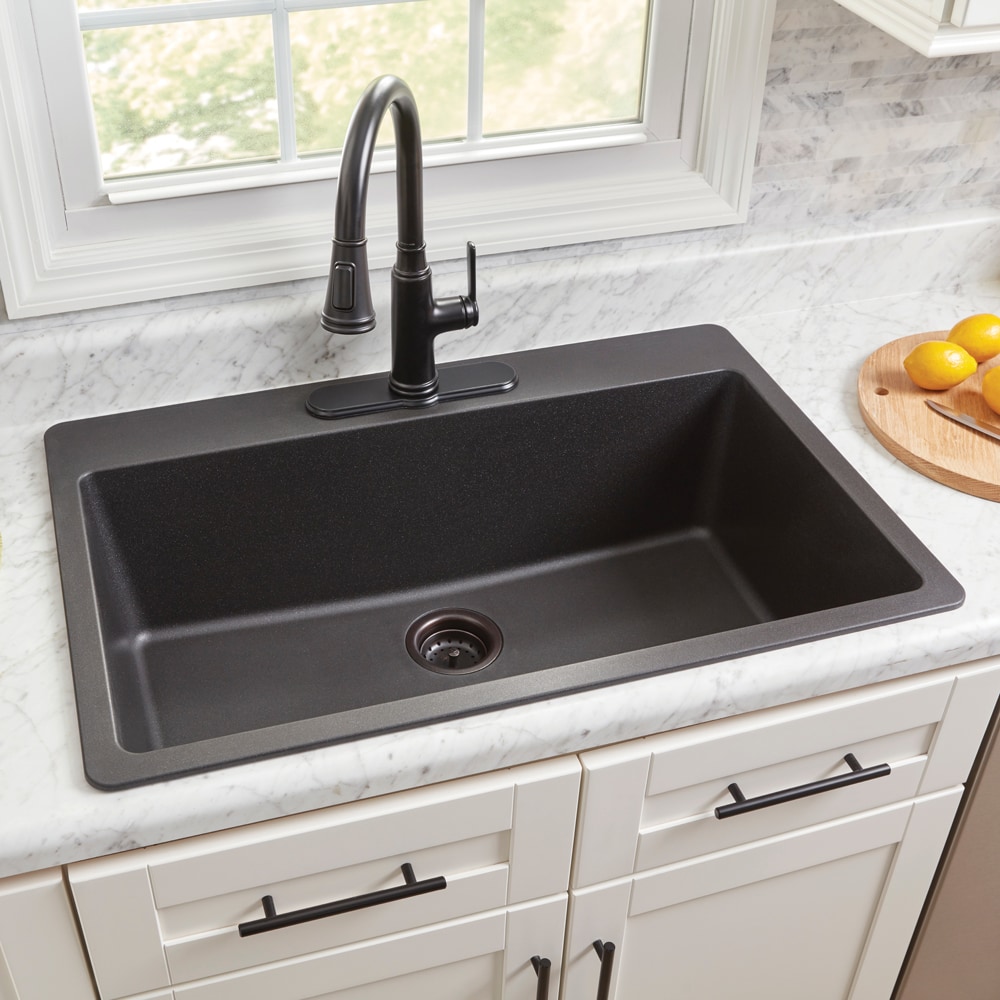
Dealing with Scratches and Chips
Despite its durability, granite can still suffer from scratches and chips, especially if heavy objects are dropped into the sink. To address minor scratches, use a polishing powder specifically designed for granite surfaces. Apply the powder to the scratched area and buff it gently with a soft cloth until the scratch diminishes. For deeper scratches or chips, it might be necessary to use a granite repair kit, which typically includes an epoxy resin that matches the color of your sink. Clean the damaged area thoroughly, apply the resin according to the manufacturer’s instructions, and allow it to cure. Once cured, sand the area lightly and polish it to blend seamlessly with the rest of the sink.
Maintaining the Sink’s Shine
Over time, even well-maintained granite sinks can lose their shine. To restore their gleam, you can use a granite polish or a homemade solution of olive oil and lemon juice. Apply a small amount of polish or oil to a soft cloth and rub it onto the sink’s surface in circular motions. This not only enhances the sink’s appearance but also provides a protective layer that helps repel water and stains. Be sure to buff the sink thoroughly to avoid any oily residue. Regular polishing keeps the granite looking vibrant and can significantly extend the lifespan of the sink’s finish.
Avoiding Common Mistakes
Maintaining a granite sink requires avoiding certain common mistakes that can cause damage. Never use harsh chemicals such as bleach, ammonia, or acidic cleaners, as these can erode the granite’s surface and dull its finish. Similarly, avoid using abrasive scrubbers or steel wool, which can scratch the sink. Do not place hot pots or pans directly on the sink, as extreme temperature changes can cause cracks. Instead, use trivets or hot pads. Additionally, refrain from cutting food directly on the granite surface to prevent scratches. By being mindful of these precautions, you can preserve the integrity and beauty of your granite sink for years.
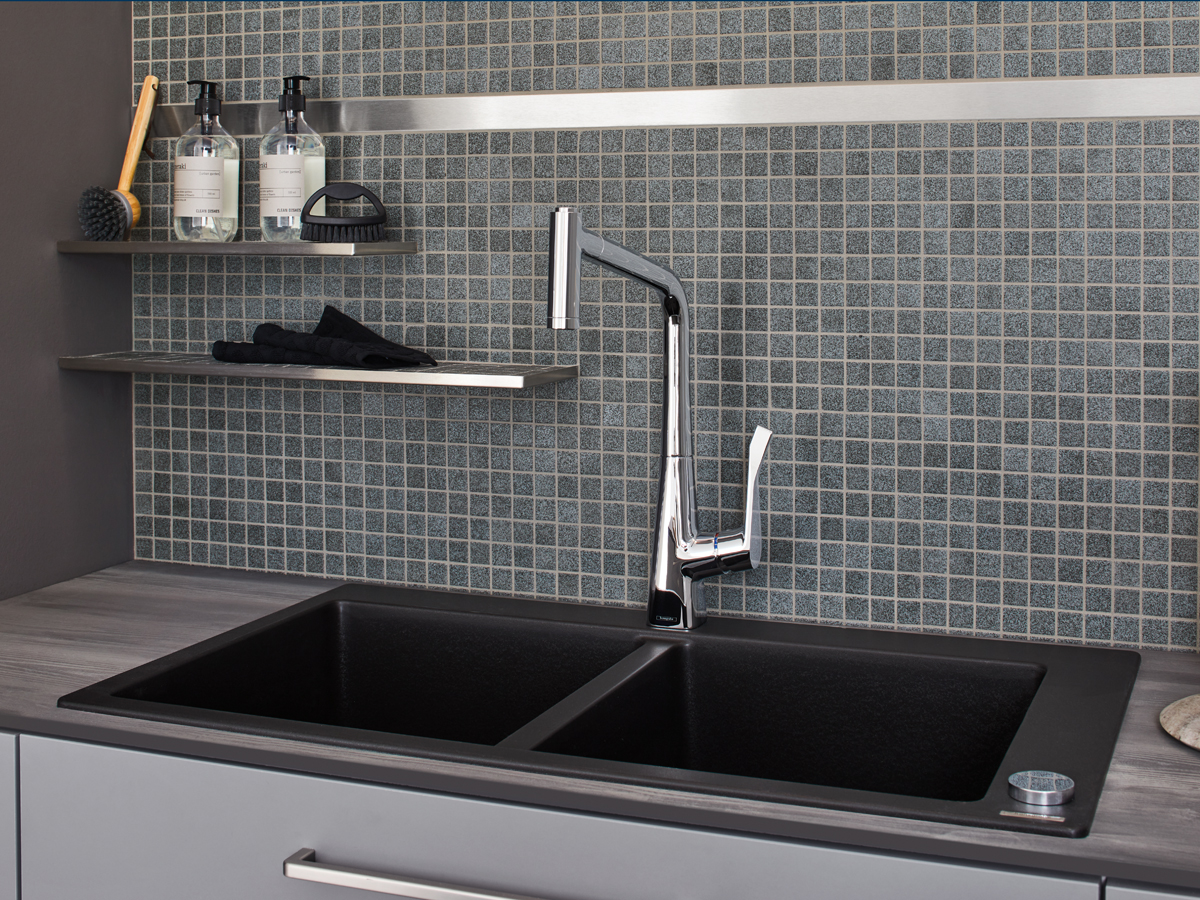
Seasonal Maintenance Tips
In addition to daily and deep cleaning routines, seasonal maintenance can help keep your granite sink in top condition. Every few months, inspect the sink for any signs of wear, such as dull spots, stains, or chips, and address them promptly using the appropriate methods. During seasonal cleaning, it’s also a good idea to check the caulking around the sink for any gaps or deterioration and reapply as needed to prevent water damage. Re-seal the granite if you notice water no longer beads up on the surface, indicating the sealer has worn off. Seasonal maintenance ensures that minor issues do not escalate into significant problems, preserving the sink’s functionality and appearance.
Eco-Friendly Cleaning Options
For those looking to maintain their granite sink sustainably, there are several eco-friendly cleaning options available. Natural ingredients like baking soda, vinegar, and lemon juice are effective and environmentally friendly alternatives to commercial cleaners. Additionally, many companies now offer biodegradable and non-toxic cleaning products specifically formulated for stone surfaces. Using microfiber cloths instead of disposable wipes reduces waste, and opting for reusable sponges or brushes made from sustainable materials further supports an eco-conscious approach. By choosing green cleaning methods, you not only protect your granite sink but also contribute to a healthier environment.
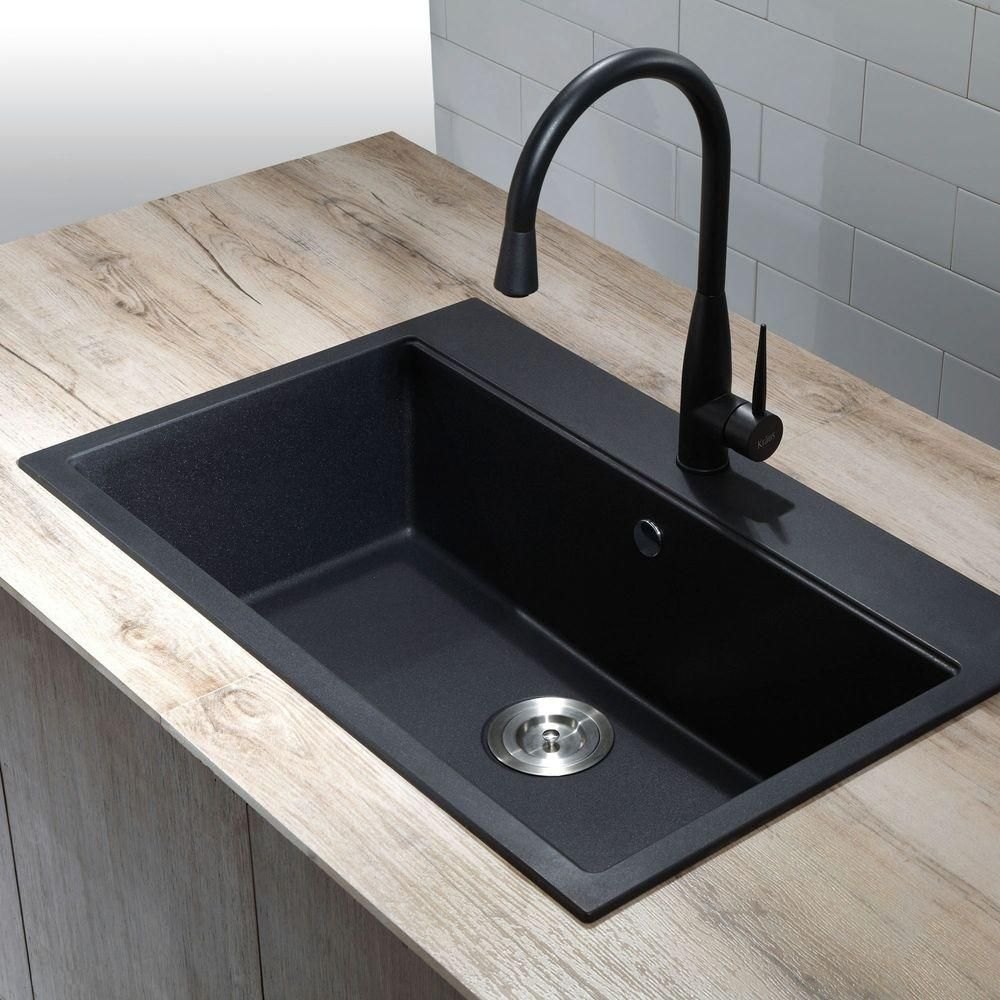
Long-Term Care and Preservation
Long-term care of your granite sink involves incorporating all the above practices into a consistent maintenance routine. Regularly clean and inspect the sink, promptly address any stains or damage, and apply sealers and polish as needed. Educate household members about proper usage and care to ensure everyone contributes to the sink’s upkeep. By investing time and effort into maintaining your granite sink, you preserve its natural beauty and functionality, ensuring it remains a stunning focal point in your kitchen or bathroom. With the right care, a granite sink can provide decades of reliable service and aesthetic pleasure.
Conclusion
Cleaning and maintaining a granite sink requires a combination of daily care, deep cleaning, and occasional repairs. By following the tips outlined in this guide, you can keep your granite sink looking its best and extend its lifespan. Remember to avoid harsh chemicals, address stains promptly, and apply protective measures like sealants and polishes. With consistent maintenance and a proactive approach, your granite sink will continue to be a beautiful and functional asset in your home for many years to come. Whether in a bustling kitchen or a serene bathroom, a well-cared-for granite sink is a testament to your attention to detail and appreciation for quality craftsmanship.
